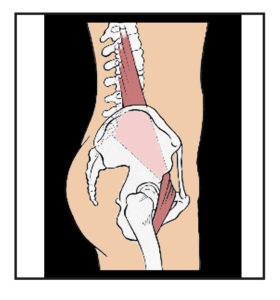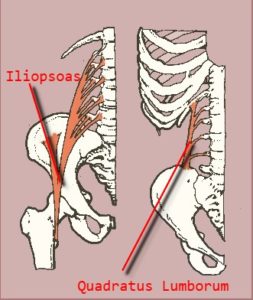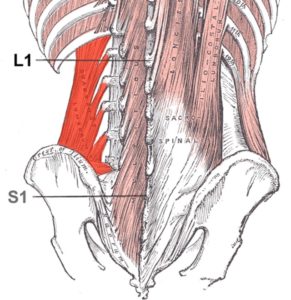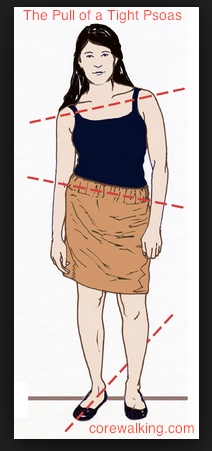Psoas Pain Takes Many Forms
The psoas is the body’s most important muscle for a number of reasons. It is the walking muscle as each successful step is initiated by the psoas major.
Along with the piriformis muscle, it helps our spine stay upright (they, along with the gluteus maximus are the only three muscles that connect the legs to the spine).
As a deep primitive muscle, it is the warehouse for our unprocessed trauma.
Psoas pain can manifest in many ways both directly and indirectly through its relationship to surrounding muscles.
It is impossible to have a problem with the psoas that does not involve the aforementioned piriformis.

 .
. 
Likewise, any problem with its next-door neighbor quadratus lumborum will involve the psoas as well.
- Pain in the lower back can come from a tight psoas that has compressed the lumber spine.
- Pain in the hip socket can be the result of a tight psoas pulling the head of the femur too deeply into the socket of the acetabulum.
- There is often a wrapping pain associated with the psoas that starts at the back of the inner thigh wrapping up and around to the rim of the pelvis. I believe this is from the tight psoas putting pressure on the inguinal ligament that helps strap the psoas down.
- Pain in the outer hip or IT band can be the result of a tight psoas externally rotating the leg and putting undo pressure on the outer thigh.
- If one or both of the psoas are tight they can cause abdominal cramping or bloating to do pressure put on the abdominal organs as they are pushed forward into the belly.
In addition to this lovely list of ailments, dysfunction in the psoas can also be related to foot pain, knee pain, shoulder pain, etc.
It is all about the psoas and avoiding psoas pain. Get to know yours and learn about what it does and how it does if you want the secrets to aging gracefully.

